Hello everyone, in this article, I will be discussing 10 types of red birds that can be found in Florida.
As a nature enthusiast and bird watcher, I have always been captivated by the beauty and diversity of birds, and red birds are no exception.
In this guide, I will provide an overview of the different types of red birds that inhabit Florida, along with key characteristics and features that can help identify them in the wild.
Whether you’re a seasoned birdwatcher or just starting out, I hope this guide will be a helpful resource for you to learn about these striking birds.
| Image | Name |
|---|---|
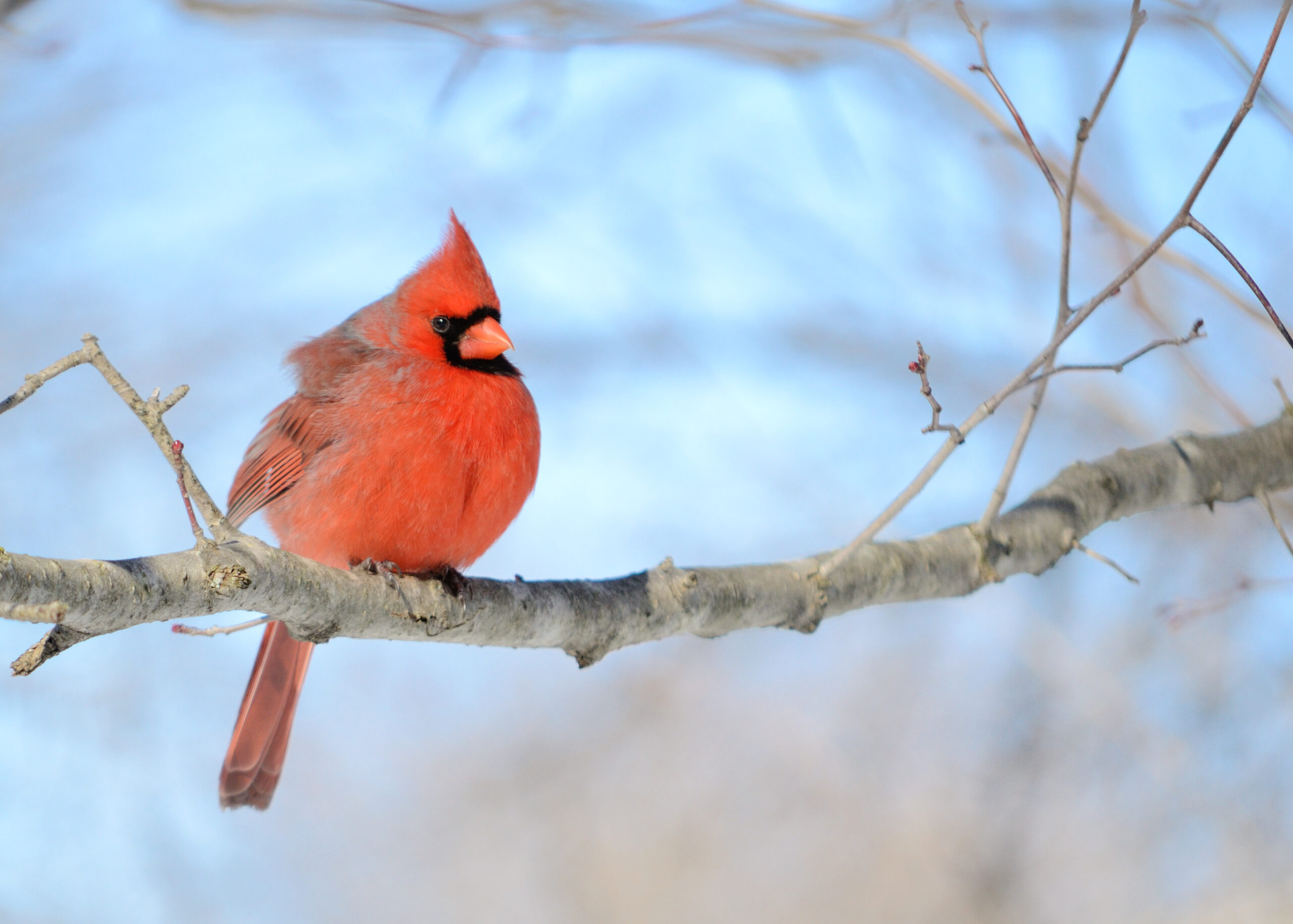 | Northern Cardinal |
 | House Finch |
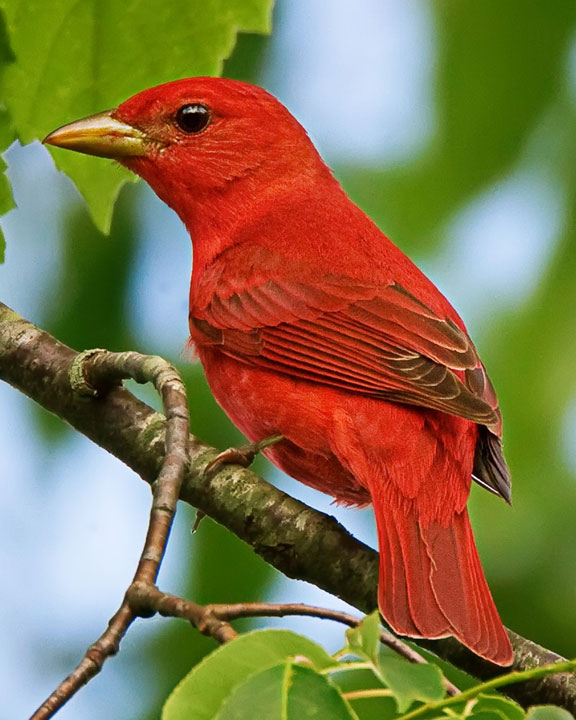 | Summer Tanager |
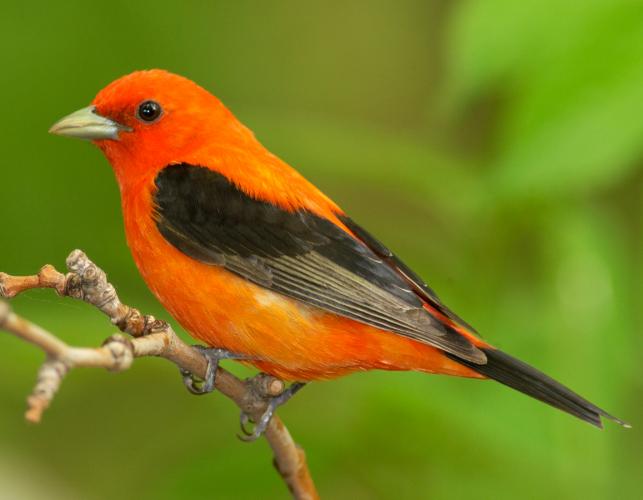 | Scarlet Tanager |
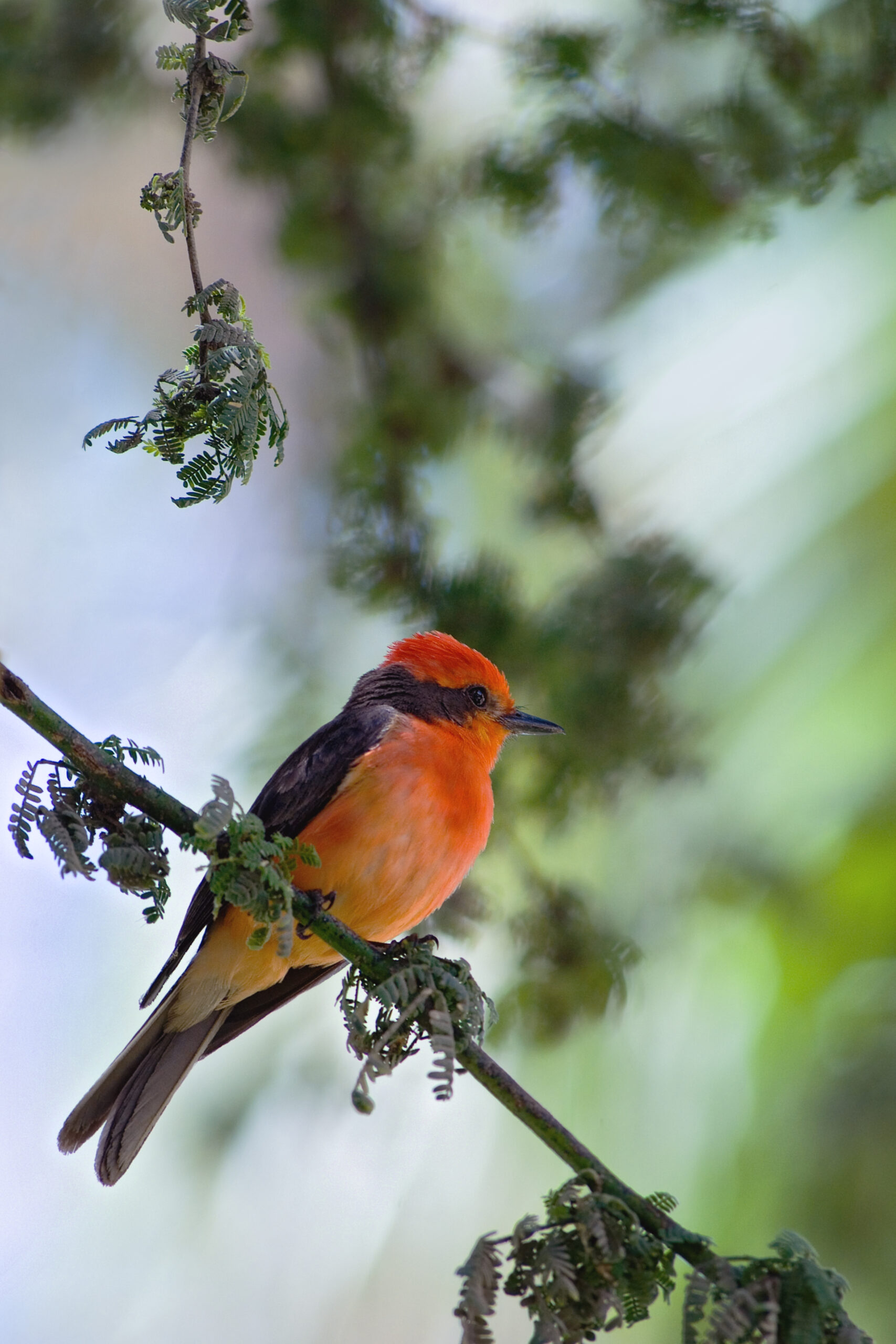 | Vermilion Flycatcher |
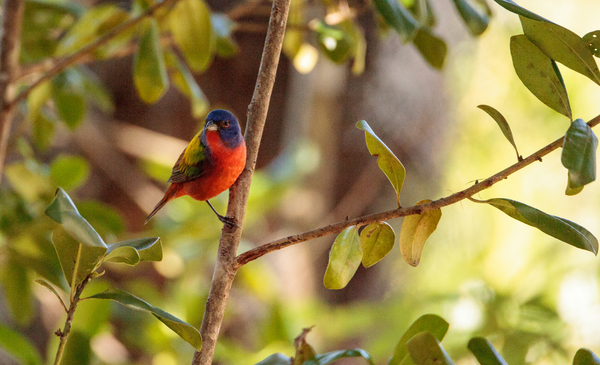 | Painted Bunting |
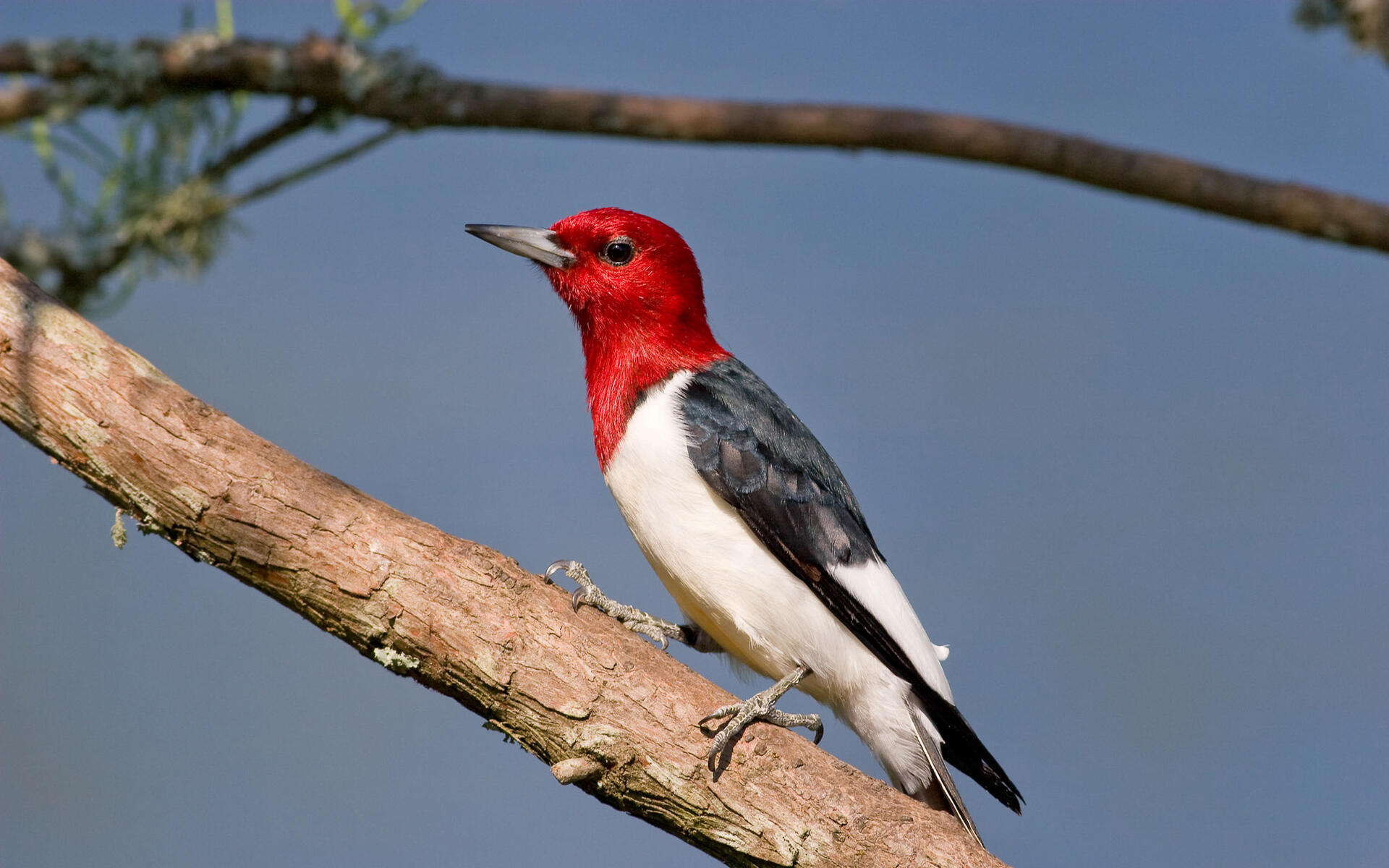 | Red-headed Woodpecker |
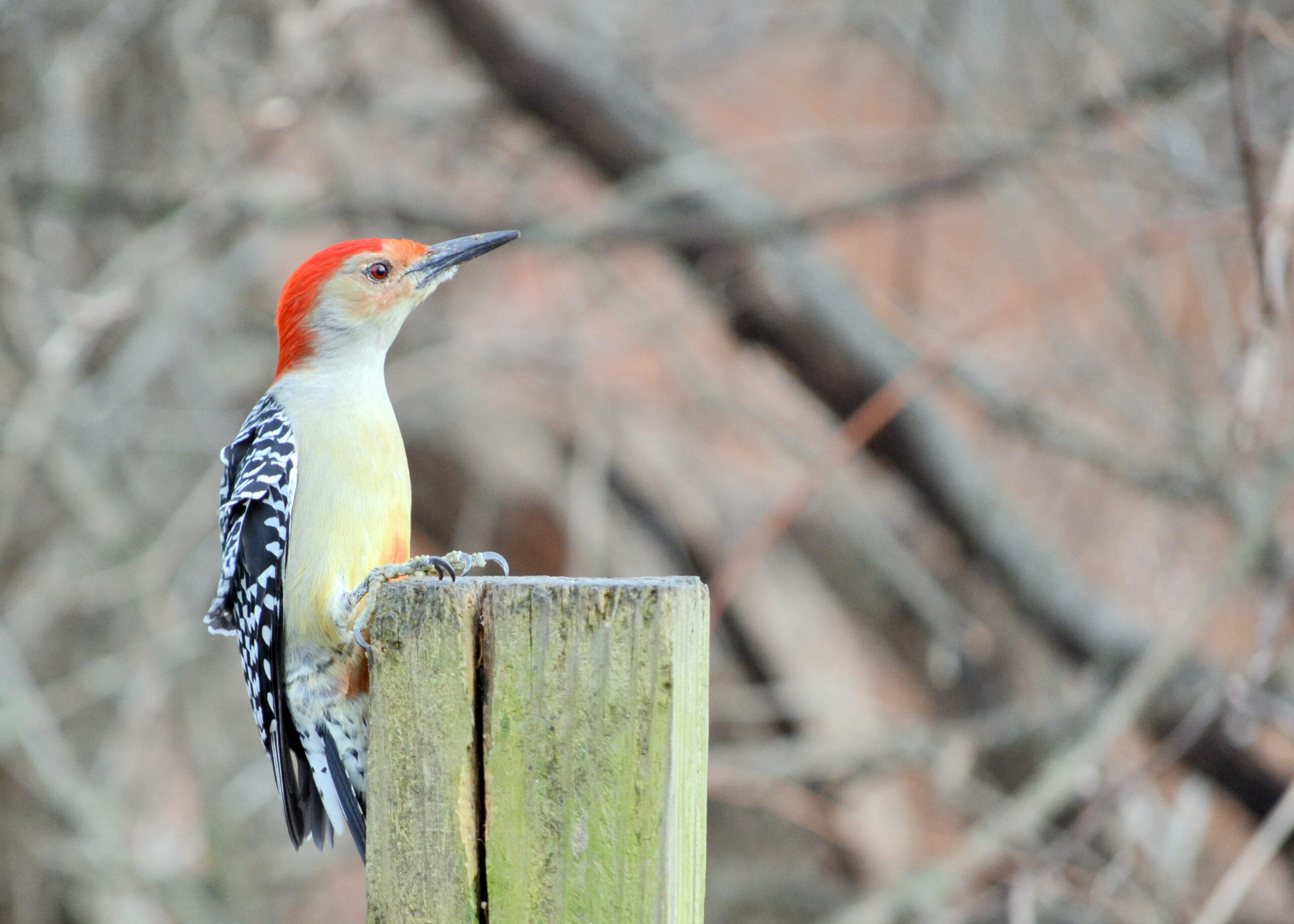 | Red-Bellied Woodpecker |
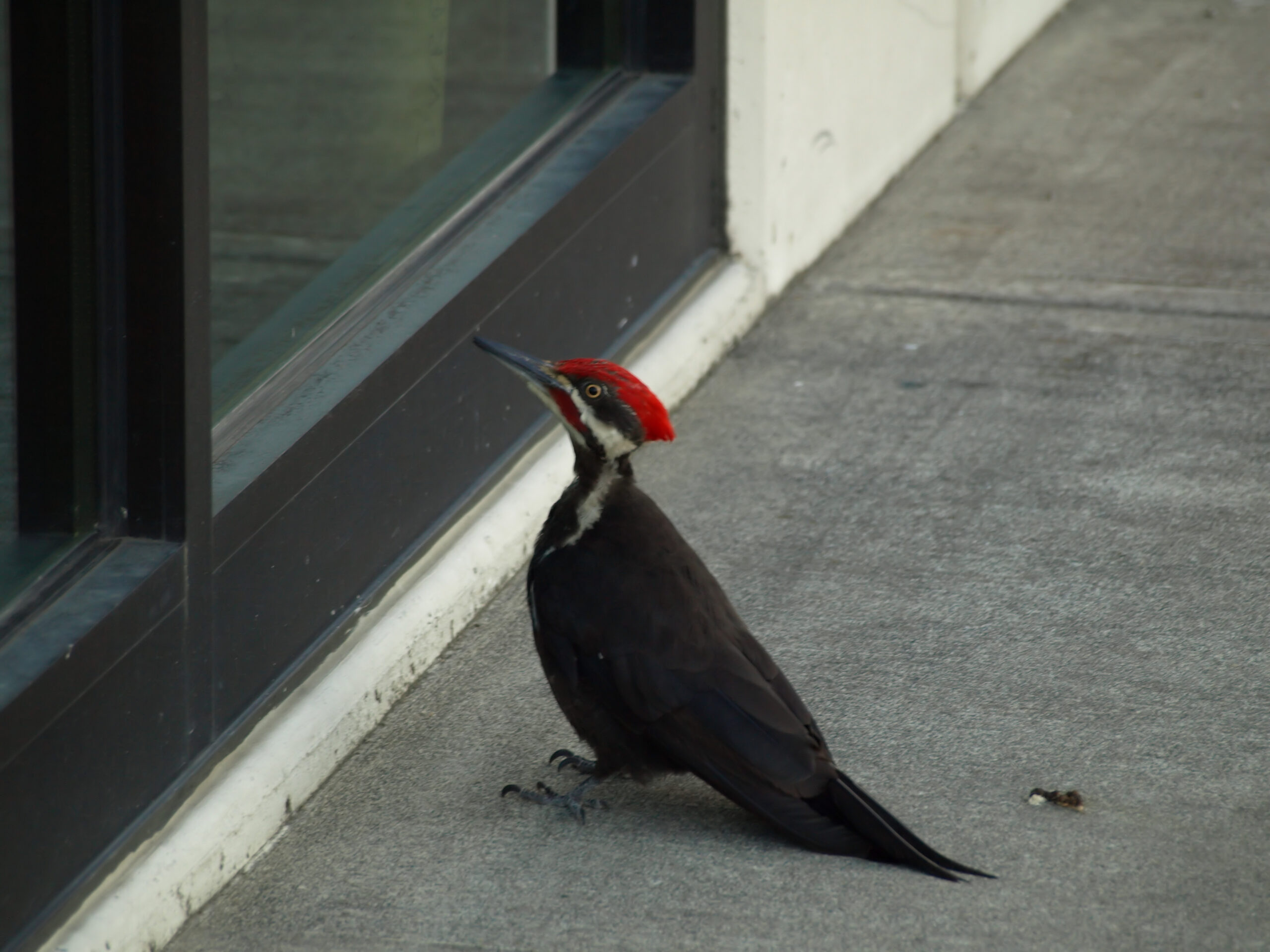 | Pileated Woodpecker |
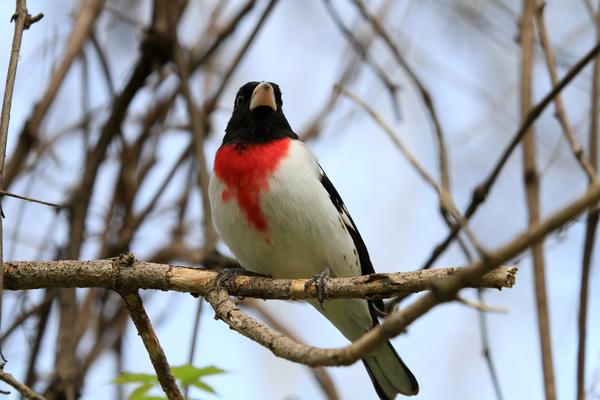 | Rose-breasted Grosbeak |
Types of Red Birds in Florida
1. Northern Cardinal
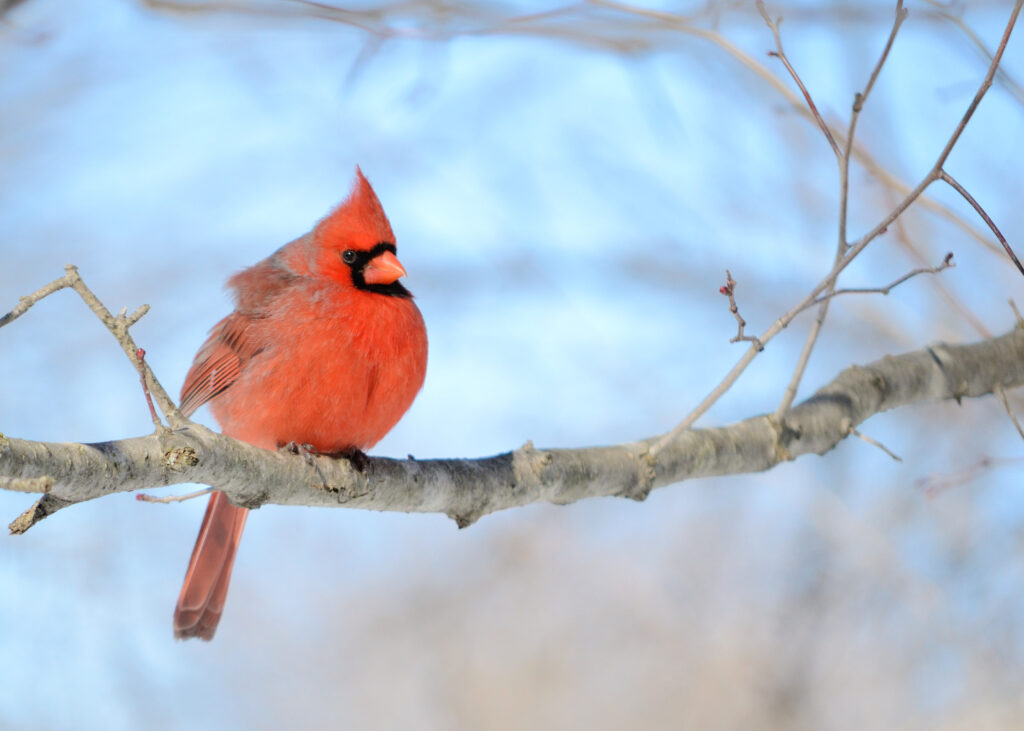
The Northern Cardinal is probably the most recognizable species of red bird across North America and a popular sight in the Sunshine State of Florida.
Male Northern Cardinals are uniformly a brilliant red hue, with the exception of the back and wing plumage, which are a somewhat deeper shade.
Their beak and upper cheeks are covered with a black mask that continues down to their neck.
Female Northern Cardinals possess a more buff-brown body color with a brilliant red beak but are otherwise similar to males.
Florida is home to a large population of northern cardinals, which may be observed in a variety of settings, including parks, backyards, and even tiny woods.
During the colder months, it abandons its area and instead unites with other birds to forage. Groups of about 25 birds have been seen.
To entice this red bird towards your feeder, try some sunflower seeds or some white millet.
2. House Finch
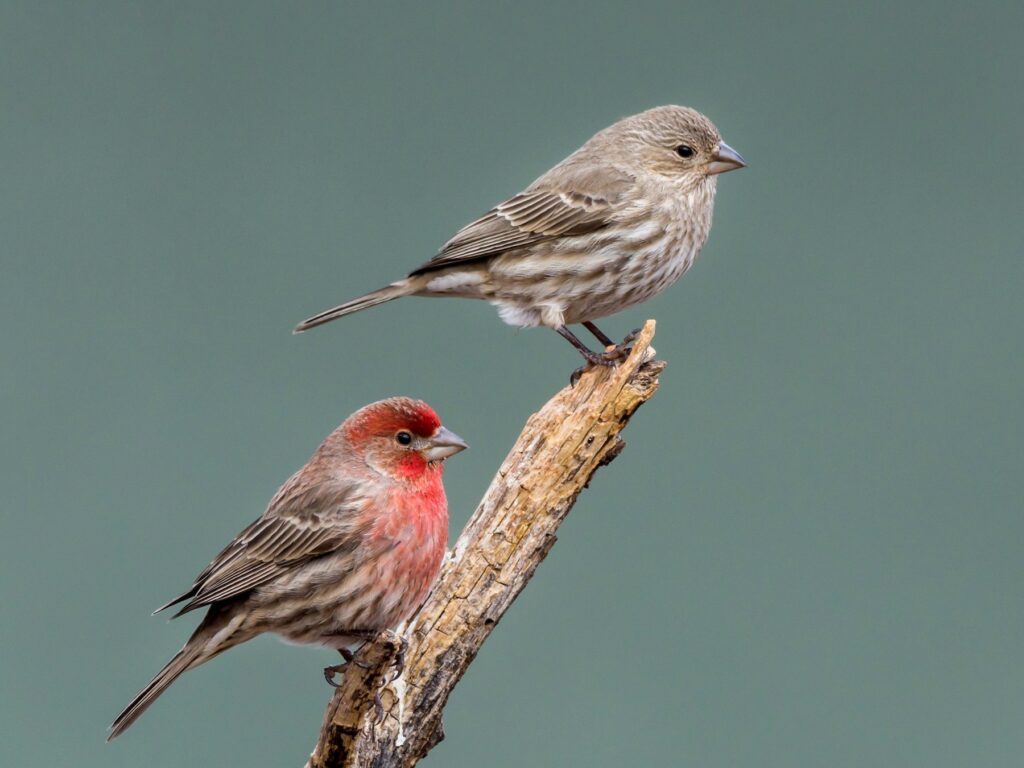
The House Finch is a ubiquitous red bird across northern Florida, where it is often seen among human settlements of various sizes.
House finches, both male and female are easily recognized by their vivid red head and top chest plumage, which may vary in shade from orange to yellow.
Less strikingly, females exhibit grey bands on a brown backdrop, making them seem duller overall.
It was not until the 1940s that this red bird was found around New York and other east coast cities; before that, it had only been seen in the western United States.
By the year 2000, the eastern House Finch species had extended so far to the west that it had met up with the earlier western species, which had begun to flourish in the 1950s and 1960s.
The only things the house finch will eat are plants, such as buds, seeds, and fruit.
House Finches will be one of the first red species to utilize a feeder you place in your garden.
You may hear the House Finch all year across Florida.
Although it does not migrate for the winter, it does relocate to regions with a greater abundance of food during the summer.
3. Summer Tanager

Florida is home to many beautiful and fascinating birds, like the Summer Tanager, which has a distinctive peaked crown.
The male adult Summer Tanager has a totally red color, albeit the wings are a little deeper than the rest of the body.
Because of their preference for foraging in the canopy of coniferous and blended woods, Summer Tanagers may be difficult to see.
Females and juveniles, in comparison to the more brilliantly colored males, are a drab yellow overall, with occasional orange spots.
Florida welcomes the Summer Tanager from May to August since this is the mating season for this migratory bird.
Many tanager species exist, but they are exclusively found across tropical regions; the Summer Tanager is the sole tanager that nests in Florida.
This red bird migrates south from Florida to warmer climes across Central America and Mexico every winter.
4. Scarlet Tanager

The male Scarlet Tanager’s vivid scarlet feathers stand in stark comparison to the coal-black of the bird’s tail and wings, giving the bird an exotic look.
In contrast to the male’s shocking red coloration, the female is a more subdued olive-yellow.
It spends its winters across South and Central America but spends its summers around Florida.
This red bird comes late in the spring and departs early in the autumn because of its preference for warm weather. Scarlet tanagers, which originate from Canada, migrate through Florida twice a year, in the spring and autumn.
In order to establish territory and scare away rival birds, both sexes use a similar song.
5. Vermilion Flycatcher
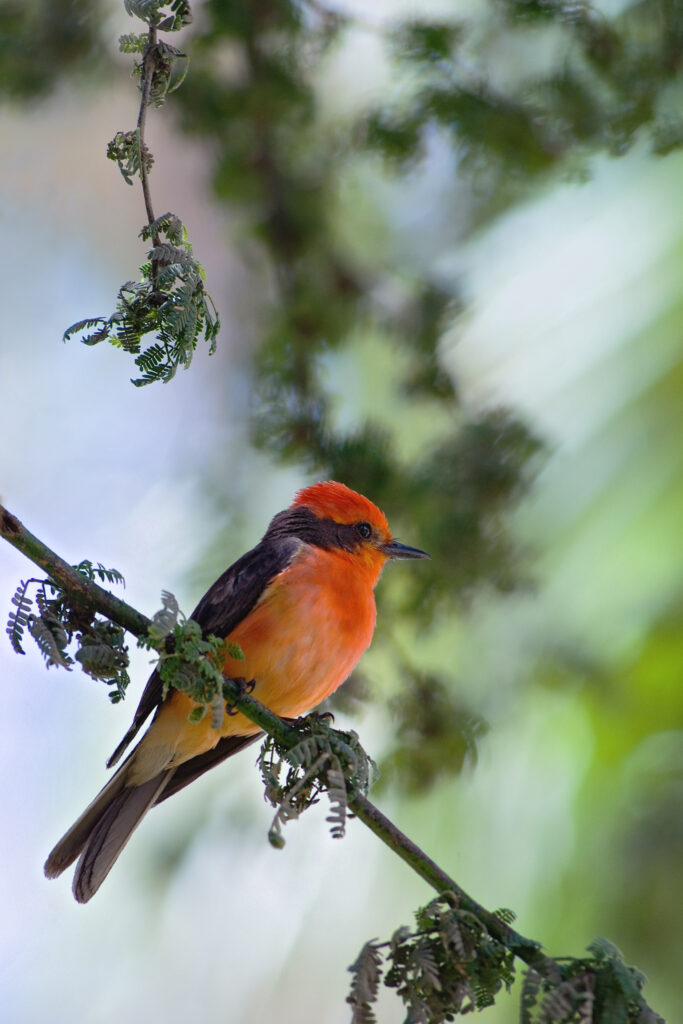
The Vermilion Flycatcher is among Florida’s most stunning crimson birds.
Adult males are dark brown throughout, but their throats, bellies, and heads are brilliant scarlet.
When compared to males, females, and juveniles have a gray-brown upper body and a white underbelly.
Few Vermilion Flycatchers spend the wintertime around Florida; instead, they go towards Central America.
This red bird is a delight to study since it is not at all timid and may often be found perched in plain sight.
The Vermilion Flycatcher thrives in wide-open woodlands and parks that are adjacent to bodies of water.
6. Painted Bunting

The Painted Bunting is a stunning little bird having brilliant colors all over its body.
The adult male has a dark blue hood that stands in stark contrast to his brilliant red neck, breast, abdomen, and back.
Both their backs and wings have a yellowish-green tone.
Females and juveniles have light green feathers and buffy yellow bellies.
The breeding season for Painted Buntings in Florida extends from May to September.
It is a migratory species, with the majority spending the colder months across Central America and a smaller number in southern Florida.
Despite the male’s flashy plumage, the covertly Painted Bunting is a difficult bird to see.
It does well in open places and forest edges near water.
Like other buntings, it relies primarily on seeds for nutrition, with the exception of the mating season, when insects play a critical role.
If you want to see this red bird at the garden feeder, try some millet or sunflower seeds.
7. Red-headed Woodpecker
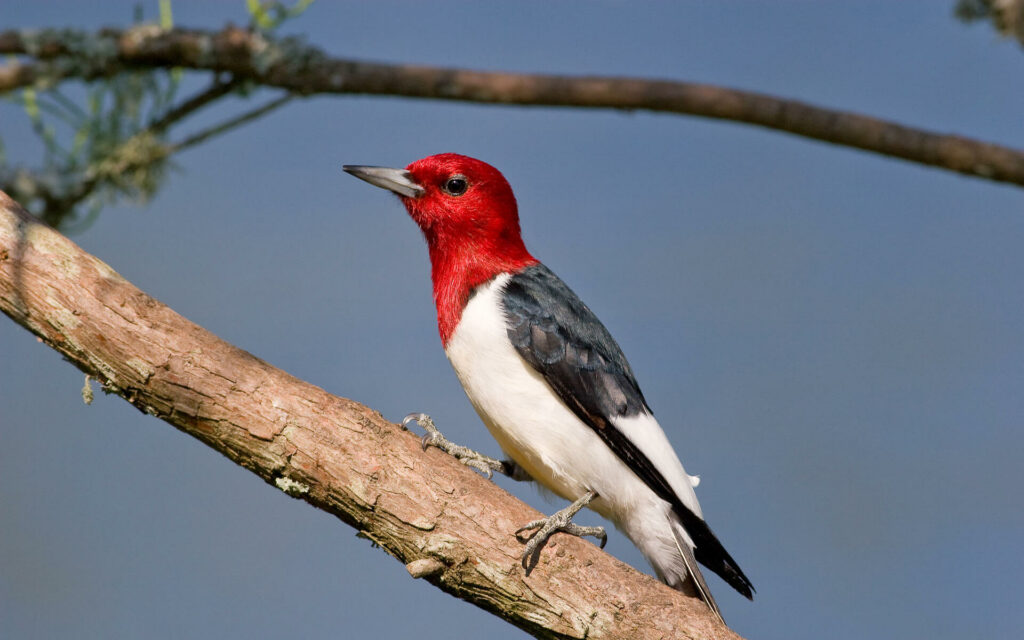
The Red-headed Woodpecker is unique among woodpeckers in that the sexes seem to be identical.
The crimson head of a red-headed woodpecker contrasts with its pure black back.
Black wings and tail contrast with a white rump, breast, and abdomen.
This bird has a gray beak and legs.
No other species of woodpecker across Florida has such a bright red crown.
The Pileated Woodpecker, in contrast, has a mostly black crown.
This bird prefers either open woodlands or woodlands with an abundance of fallen trees and other decaying debris.
In comparison to other woodpeckers, which typically only utilize nest cavities once or for a short length of time, this species may reuse the same hole for many years in a row.
Unfortunately, its population has dropped by more than nearly 90%, making it an extremely unusual sight in several sections of the nation where it was formerly the most frequent woodpecker.
8. Red-Bellied Woodpecker
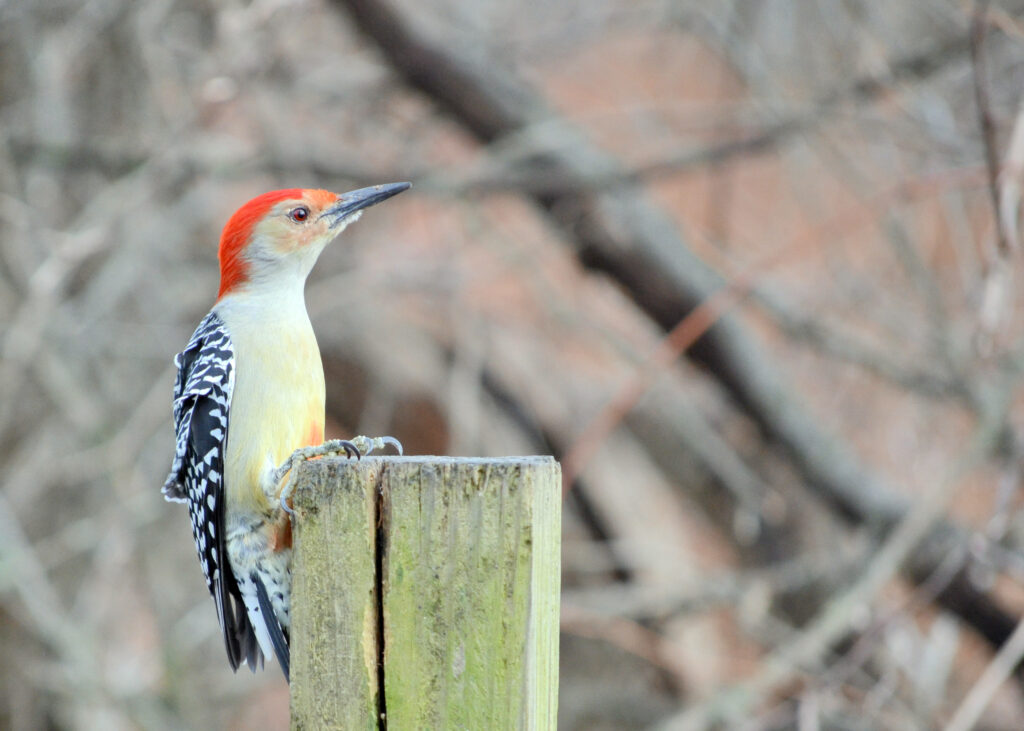
The Red-bellied Woodpecker is characterized by a black and white “Zebra” appearance on its back and a white tail.
The redness of its head extends all the down to the nape of its neck.
Male and female seem to be almost identical, with the exception of the female’s mostly gray crown.
This woodpecker is most often seen in mature trees across Florida’s shaded forest margins, woods, and gardens.
In order to find insects, spiders, centipedes, and other pests, it bores holes into decaying wood.
This bird prepares for the cold season by storing food in crevices and cracks in trees such as acorns and berries.
This bird constructs a brand-new nest each year just underneath the old one in the same tree.
It gets its name from the little crimson hue present on its abdomen, however, this is not always obvious.
Among the most frequent woodpeckers across Florida, thankfully, this stunning bird is slowly increasing its range throughout the whole nation.
9. Pileated Woodpecker
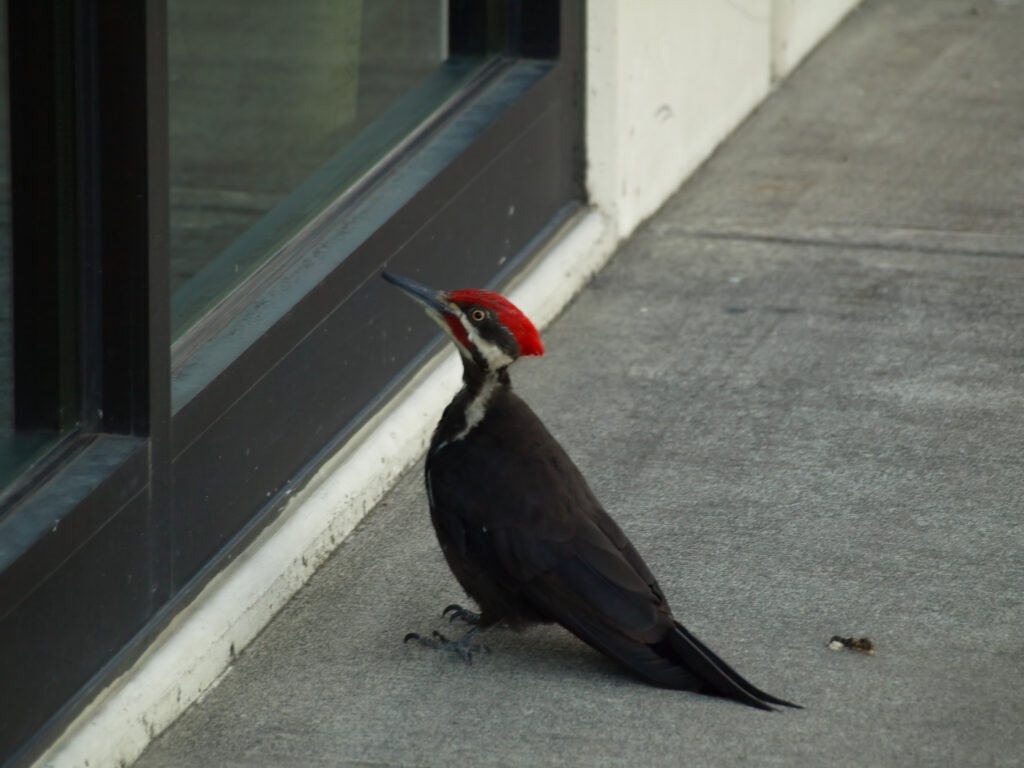
A huge woodpecker about the size of a crow, the Pileated Woodpecker is distinguished by its male’s crimson mustache and crest.
Although the remainder of this bird appears black, the white tips of its wings catch the light as it flies.
Being the state’s biggest woodpecker, the Pileated is also one of the state’s most reclusive birds, preferring to reside in huge, wooded areas.
The Pileated Woodpecker will bore multiple foot-long oval cavities in tree trunks in search of insects to consume.
Whenever Pileated Woodpeckers are in the area, you can always tell because they leave enormous wood chips all over the ground near the trees they use for food.
Its preferred food is carpenter ants, and it nurses its young, partially digested insects.
When fledging woodpeckers first emerge from their nests, they look very much like their adult counterparts.
10. Rose-breasted Grosbeak

The Rose-breasted Grosbeak has a huge, distinctive beak and prominent patterns on its chest.
In the summer months, mature males possess a crimson chest that stands out against their all-black back and head, as well as the white wing bands on their black wings.
However, both adult females and juveniles have brown feathers that are paler on the underbelly than the back and are banded.
They possess a white wing bar and a white line across the eyebrow.
As a migrant, this red bird may be spotted across Florida on its way to or from Central America, where it spends the winter.
Like other Crossbills, it relies heavily on pine cones for its diet.
Conclusion
In conclusion, the 10 types of red birds found in Florida are a stunning and captivating group of birds.
Each species has its own unique set of characteristics and features that make them easy to identify and appreciate.
From the vibrant Northern Cardinal to the elusive Scarlet Tanager, Florida’s red birds are a beautiful and essential part of the state’s diverse ecosystem.
Whether you’re exploring the state’s forests, wetlands, or urban areas, keep an eye out for these striking birds and take a moment to appreciate the natural beauty that surrounds us.
With their bright colors and distinctive songs, Florida’s red birds are sure to delight birdwatchers and nature lovers of all ages and experience levels.
FAQ
What is the most common red bird in Florida?
The most common red bird in Florida is the Northern Cardinal.
Are all red birds in Florida native to the state?
No, not all red birds in Florida are native to the state. Some species, like the House Finch and the House Sparrow, were introduced from other parts of the world.
What is the best time of year to see red birds in Florida?
Red birds can be seen in Florida throughout the year, but the best time to see them is during the spring and summer months when many species are breeding and raising their young.
How can I identify different species of red birds in Florida?
To identify different species of red birds in Florida, look for key characteristics such as bill shape and size, coloration, and patterns on the head, back, and wings, and habitat preferences.
Are red birds important to the ecosystem?
Yes, red birds play an important role in the ecosystem as seed-eaters, insect predators, and pollinators.
Where can I find red birds in Florida?
Red birds can be found in a variety of habitats throughout Florida, including forests, wetlands, parks, and urban areas.
Last Updated on April 7, 2023 by Lily Aldrin
